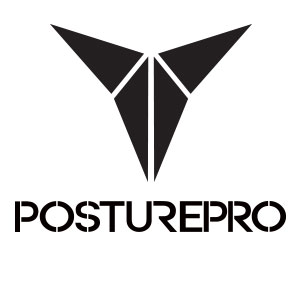The eye is the organ that situates us in relationship to the horizon. The eye is not only an element of vision; it is also (with the foot) one of the most important receptors of the postural system.
When muscles that move the eyes are out of balance, our perception of the environment changes, and the entire body attempts to compensate for that phenomenon. In doing so, shifts and rotations of the shoulders and pelvis occur and postural alignment suffers.
The muscles of the eyes share a direct relationship with muscles of the neck. When an asymmetry is found with the muscles that are responsible for movement of the eyeball, there will be an asymmetry with the muscles of the neck. This will lead to increased muscle tension in the neck, shoulders and spine in general. Tightness and lack of range of motion settle in.
A vast amount of neuroscientific work proves without the shadow of a doubt the role of the eye as a receptor of the tonic postural system . The eye is both an endocaptor and exterocaptor of the system.
It serves 2 major functions: Exteroception (vision), and proprioception (extra-ocular muscles).
The two ocular pathologies that are involved in tonic postural disequilibriums are:
- refraction problems (vision) which concern sensorial exteroception of the eye;
- convergence problems (proprioception) which concern the proprioception of the extrinsic ocular muscles.
Unlike refraction disorders (myopia, astigmatism, hypermetropia), which are generally recognized and treated, convergence disorders are very rarely diagnosed.
Proper testing is frequently not included in standard eye exams in optometrist’s, opthalmologist’s or optician’s office and is a growing problem with children.
Whereas refraction disorders, are generally detected and corrected, proprioception issues, like insufficient eye convergence, are rarely diagnosed.
Clinical Signs
A) APPARENT PRIMARY CAUSES.
– Cranial traumas:
being stunned by a simple knock on the head may be enough, all the more so if there is loss of consciousness or coma. This is probably one of the most frequent causes.
– Cervical sprain:
the second major cause: the reverse of the oculocephalogyric pathways (the neck muscles are rich in muscular bundles). Here, the extrinsic eye muscles are subservient to the neck muscles.
– Phenomena due to intracranial hyperpressure.
– convulsions;
– meningitic syndromes;
– cerebrovascular disease;
– cerebral abscess;
– meningitis.
-A high fever associated with a meningitic reaction may be enough, all the more so if there are convulsions.
– Epilepsy.
– Certain autoimmune diseases.
– Spinal fractures.
– Foetal suffering.
– A number of seemingly congenital hereditary disorders.
All of the above leave a convergence disorder, which will still be present 30 or 40 years later, even though the initial pathology may have been cured in a few days.
In this case, the body has integrated a new body image.
Apparent primary causes leave a convergence disorder, which generally affects the dominated eye; the master eye is rarely affected.
B) MANIFESTLY SECONDARY CAUSES.
– Dental focus or occlusion defect:
these may cause a convergence defect via trigeminal afferents on the formations involved in oculomotor activity.
– Hepatitis:
it frequently leaves a convergence defect in the right eye (roughly one case in three in our study).
– Tricyclic derivatives (antidepressants):
Lead to convergence defects in the medium to long term (often in both eyes). The defect persists even after treatment has stopped. To a lesser degree, tranquillisers taken over a long period of time or at high doses may result in similar disorders.
-Antidepressants: non-tricyclic
Deciding whether a disorder is reversible (adaptive), or requires correction is quite difficult. That is why it is necessary to work with orthoptists and opthalmologists who are familiar with our speciality.
For posturologists, the diagnosis should be made as soon as a postural disorder becomes apparent, apart from trauma, there are many other etiologies, but above all, a convergence defect never corrects itself, it generates a new body image which functions with the defect and the postural disorder that accompanies it. If one has a convergence defect, in the absence of treatment, it is for life!



